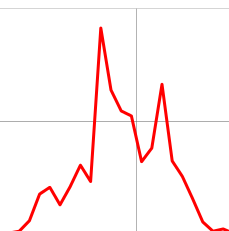I’m trying to wrap my head around what is, for me, a very interesting question. I was recently involved in a well-meaning effort by some people with very large hearts to create awareness around what many believe is a very important topic. For a short period of time we appeared on the radar as a trend on Twitter. It raised some questions in my mind about the nature of influence, trends and pervasive communications.
When I set out to write a post there’s usually something specific I want to say. My posts represent my view of what’s going on in a particular sector and what it might mean going forward. I see an event or a series of events — a trend — and attempt to put some context and meaning around it. My goal is to educate and encourage discourse. In life and in business, I am big fan of the Socratic method. Asking good questions — and asking the right questions — is an important part of my process. In this case, for this post, I raise more questions than I have answers.
Influential People Have Influence
Justin Bieber can make something trend. Barack Obama can make something trend. Can I? Can you? Consider these statements:
- Big things happen which activate many people.
- Big people talk about things which activate many people.
- Lot’s of small people/organizations try to make big things happen.
Ebb And Flow
There are forces at work messing with the ebb and flow. I call it “shiny penny syndrome.” Pervasive communications creates an opportunity for a message to get broader reach and impact, but does the same pervasiveness keep people asking “Ok, that’s nice, but what else is there?” It seems people flock to a cause, engage, then move on. Some trends last, some fade out quickly. What generates the momentum?
Some of it has to do with sentiment. They say bad news travels faster than good news. History has shown FUD to be effective in driving sales, marketing, and PR messaging. It’s the life-blood of the 24 hour news cycle. However, there are more positive trends as well (no, don’t ask me to explain Tebowing), such as the one I started out with here.
Confluence, Tributaries and Flash-floods
Back in January the “ether” was a-buzz with talk of SOPA. Just a short month ago KONY 2012 went viral. And yet, today there’s nothing thats occupying the zeitgeist in my neck of the woods. Sure there are a lot of smaller threads, and even big topics (national elections, economy) but nothing galvanizing. Media outlets talk about a “slow news day.” Why is that?
Do trends emerge when lot’s of small “agendas” converge?
Is it that big trends emerge by galvanizing/organizing/collecting lot’s of small trends?
Are there latent “seeds” ripe to be activated? What is the process through which they are activated?
There are lots of people out there trying to make their voices heard, driving an agenda. Clearly there must be a strategy in identifying lot’s of small trends that you can “influence” to create a larger trend.
Can seemingly small, inconsequential interests find a unifying thread that drives influence, even to the point of creating a disruption?
The Petri Dish of Social Media
Social media platforms, with their rapid iterations of action/reaction provide a treasure trove of data points to analyze the nature of trends. As I write this, I Am Legend is trending on Twitter, in my local area (NY) and in the United States. This movie came out in 2007. What brought it to local and national attention today? Did something happen to Will Smith? The data is out there — Big Data — if someone can ask the right questions.
I know I asked more questions than I answered. I hope they were good questions. Maybe even the right questions.


Pingback: The public forum (A.K.A. Why Lady Gaga receives so much hype) « prescribingreality()
Pingback: Always be interesting – Mark Di Somma: The Upheavals Blog()